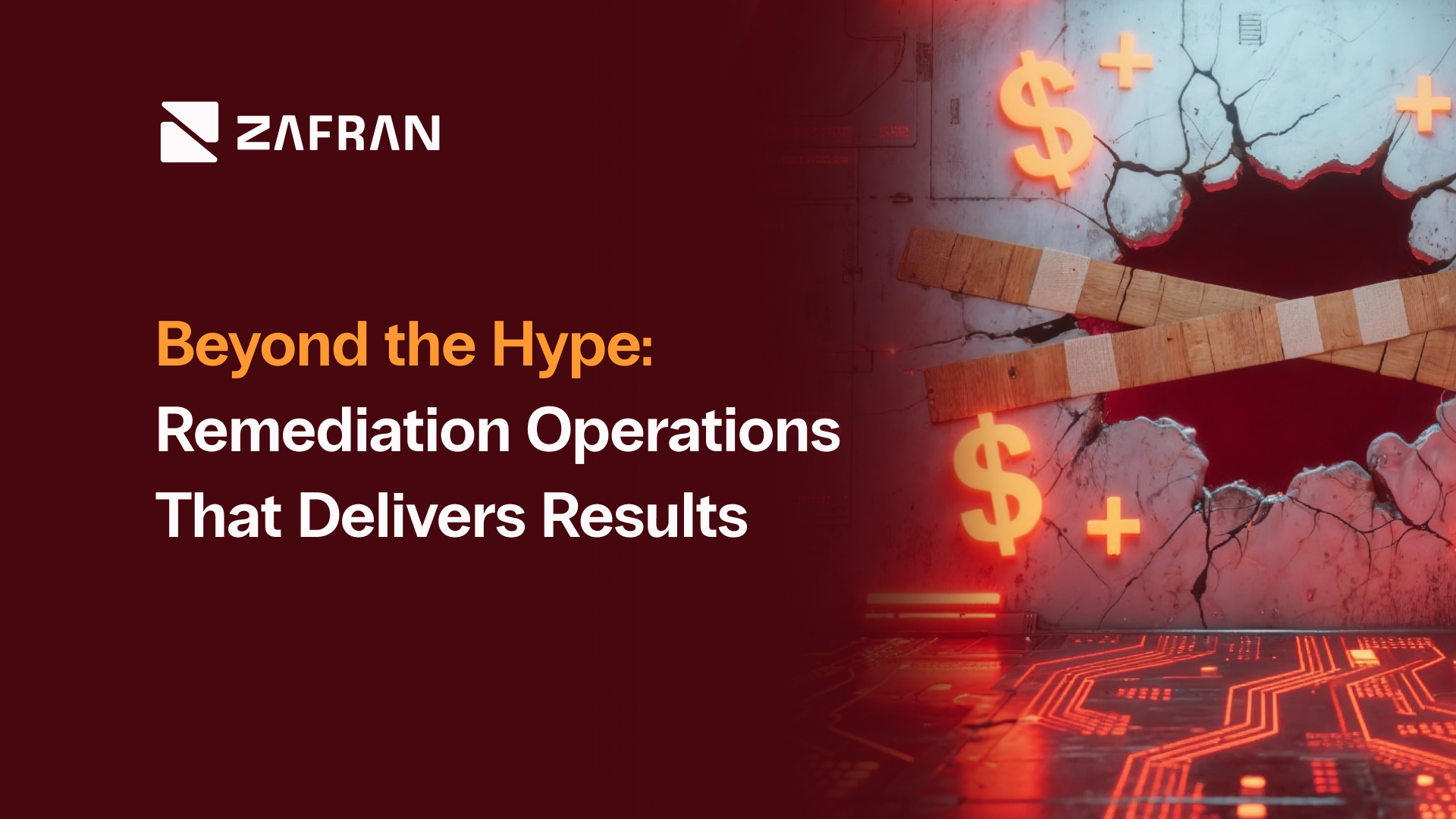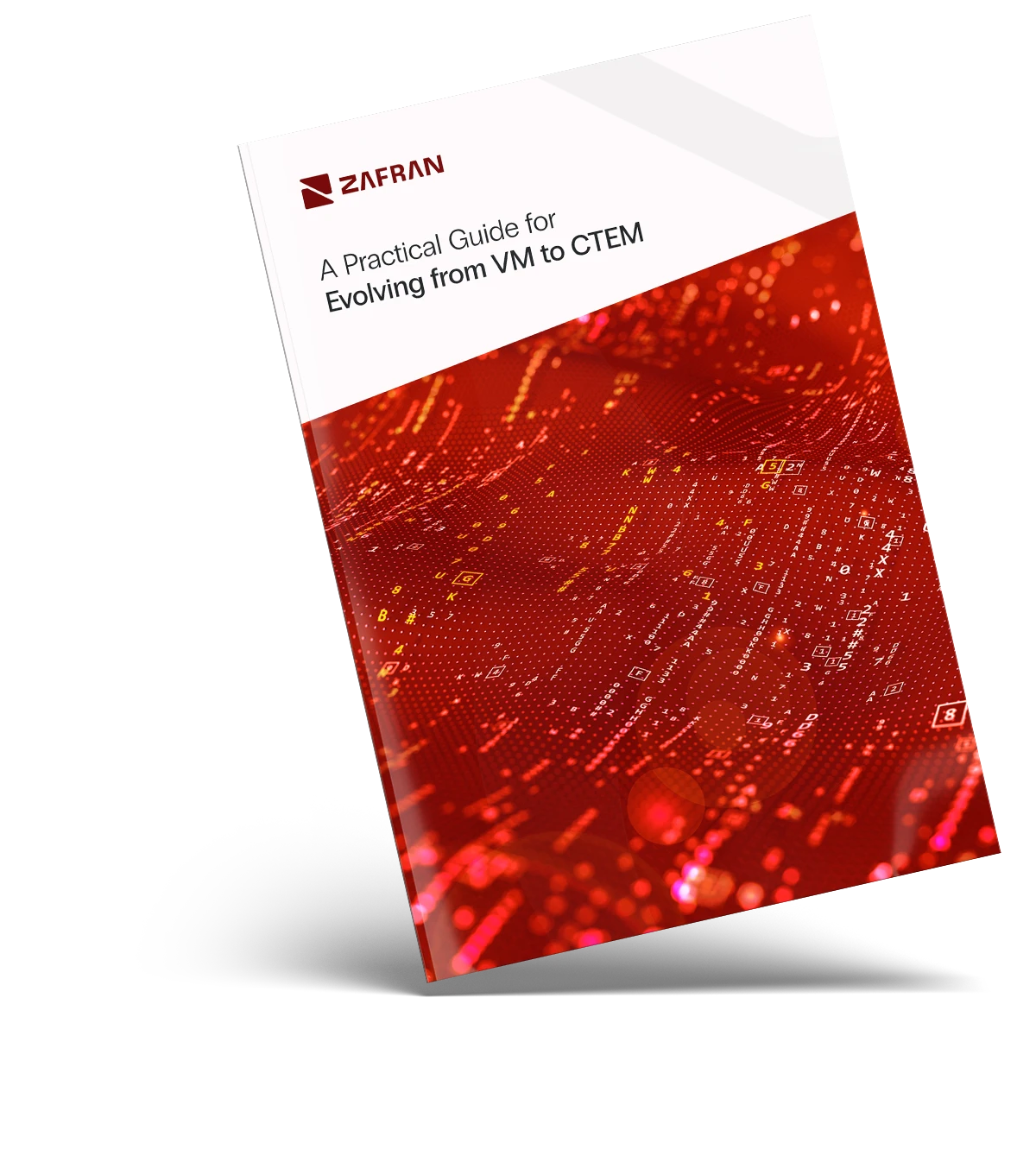Beyond the Hype: Remediation Operations That Delivers Results

Executive Summary
Many organizations struggle with vulnerability remediation, facing a flood of alerts, manual triage, and misrouted tickets that slow productivity and leave critical risks exposed. Legacy tools lack the context to prioritize and consolidate related CVEs, creating redundant work and long exposure windows that attackers exploit in days while patching takes weeks. Zafran’s RemOps revolutionizes this process by creating an AI-optimized remediation plan that eliminates overlapping detections and reduces ticket noise. RemOps automates task routing using centrally-governed assignment rules, and works with your existing ticketing platform to automatically create and enrich tickets. In this way, Zafran’s RemOps bridges the gap between Security and IT.
Each Zafran Remediation Item (ZRI) merges dozens of related CVEs into a single actionable “golden ticket,” reducing time spent per vulnerability by 87% compared to traditional workflows. This efficiency translates directly into cost savings, with organizations saving from $169K to over $2.7M annually, depending on size and industry. By automating manual triage and ensuring only truly exploitable vulnerabilities are actioned, RemOps enables tighter collaboration, faster Mean Time to Remediate (MTTR), and improved risk posture. With measurable ROI and quick deployment with existing tools and optimized workflows, Zafran empowers organizations to reclaim thousands of engineering hours and close real risks faster.

The Hidden Costs of Manual Remediation
For many enterprises, patching vulnerabilities isn’t just a technical task; it’s a costly, time-consuming drain on resources that slows productivity and leaves critical risks exposed. Despite advancements in vulnerability scanning, remediation remains one of the most dysfunctional and fragmented parts of the security workflow.
Security teams today face an unrelenting flood of vulnerabilities from multiple scanners, platforms, and compliance mandates. But finding problems is only half the battle; the real challenge is fixing them. Manual processes lead to duplicated alerts, inconsistent data, and poorly routed tickets that lack the context owners need to act. Simple questions like “Who owns this issue?” or “Has this been fixed?” can take hours of spreadsheet digging and ticket chasing to answer.
The result? Long exposure windows. The average time to exploit a vulnerability sits at a mere five days, yet the average organization takes 49 days to patch. In a 60,000-asset environment, over 1.8 million CVEs may surface annually, with 100,000 flagged as “critical.” Even if 80% are low complexity (12 minutes to patch) and 20% are high complexity (180 minutes), legacy scanning still lumps an average of 7.2 CVEs per ticket, creating a noise-filled system that consumes time, inflates costs, delays projects, and leaves organizations unnecessarily exposed.
How RemOps Changes the Game
The Zafran Threat Exposure Management Platform transforms vulnerability management by focusing attention for maximum effect. First, Zafran cuts through the noise of vulnerability data to reveal the exposures that are most likely to be exploited and lead to an incident. From there, Zafran leverages your existing defenses to quickly mitigate these threats—buying time and reducing immediate risk without waiting for patches.
The last mile of this process is RemOps. Once the most critical exposures have been identified and near-term mitigations are in place, RemOps operationalizes permanent fixes at scale. Powered by AI, it consolidates duplicate and overlapping findings into a small number of high-fidelity remediation tickets and automatically routes them directly to the right owners via platforms like Jira and ServiceNow. This bridges the long-standing gap between Security and IT, eliminating manual triage and accelerating time-to-remediate.
At the heart of RemOps is the Zafran Remediation Item (ZRI)—a “golden ticket” that merges dozens of related CVEs into a single ticket that provides high-fidelity, step-by-step instructions to remediate root causes with minimal rework. With legacy scanners each remediation ticket only addresses a handful of CVEs (around 7.2 per ticket), creating noise, duplicated effort, and wasted engineering hours. With RemOps, consolidation is dramatically higher. Across more than 30,000 critical RemOps tickets, we observed an average of 58.4 CVEs per ZRI. Applying the same effort assumptions (80% low-complexity CVEs taking 12 minutes, 20% high-complexity CVEs taking 180 minutes), this consolidation results in an average of 0.8 minutes per CVE, an 87% reduction in time spent per vulnerability compared to traditional, manual workflows.
Quantified Value of RemOps
We analyzed the time cost of addressing vulnerabilities by estimating the minutes required to handle low-complexity and high-complexity patch requests per ZRI (Zafran Remediation Item). Post-Zafran, optimized routing and consolidated tickets dramatically reduced the minutes required per ZRI.
We translated this time reduction into engineer labor costs to assign a clear dollar value to the savings achieved with RemOps. Assuming 80% of CVEs (low complexity) are patched by junior engineers with an hourly FTE wage of $51.08, and 20% of CVEs (high complexity) by mid-level engineers with an hourly wage of $75.12, the blended labor rate is $60.10/hour. Using data from real customer environments—number of assets, total CVEs, and critical CVEs before and after Zafran—we calculated the actual labor cost savings delivered by RemOps.
Industry-level analysis showed substantial annual savings across all segments:
- Healthcare: ~$627K annually from streamlined remediation workflows in complex, compliance-driven environments.
- Industrial: ~$458K annually by reducing manual triage and repetitive patching tasks.
- Consumer & Commerce: ~$577K annually from eliminating ticket noise and freeing engineering resources for higher-value work.
- Financial Services: Over $2.7M annually, the highest savings observed, driven by faster cross-team coordination, minimized audit delays, and quicker closure of high-risk exposures.
- Technology: ~$446K annually from optimized remediation plans and reduced engineering overhead tied to recurring CVE management.
Savings scaled with company size:
- SME (500–5,000 employees): ~$169K annually
- Large Enterprise (5,000–15,000 employees): ~$577K annually
- Global Enterprise (15,000+ employees): Over $2.7M annually
Across industries and company sizes, organizations are realizing significant cost savings with Zafran’s RemOps by eliminating manual triage, automating ticket routing, and accelerating Mean Time to Remediate (MTTR). The result is measurable ROI, improved efficiency, and faster closure of real risks.
Conclusion and Next Steps
Zafran RemOps delivers measurable results by eliminating noise, accelerating remediation, and delivering substantial cost savings. It bridges the gap between Security and IT, enabling organizations to know and fix their biggest risks first, reclaim thousands of engineering hours annually, and demonstrate tangible ROI to leadership and auditors. Organizations can achieve these outcomes quickly, leveraging their existing tools and workflows. To understand how RemOps can cut your vulnerability remediation costs by up to ninety percent while improving security posture, request a customized ROI analysis from Zafran.
Traditional vulnerability management must change. So many are drowning in detections, and still lack insights. The time-to-exploit window sits at 5 days. Implementing a Continuous Threat Exposure Management (CTEM) program is the path forward. Moving from vulnerability management to CTEM doesn't have to be complicated. This guide outlines steps you can take to begin, continue, or refine your CTEM journey.

Request a demo today and secure your organization’s digital infrastructure.
Request a demo today and secure your organization’s digital infrastructure.
